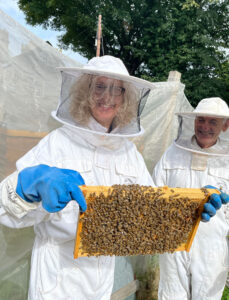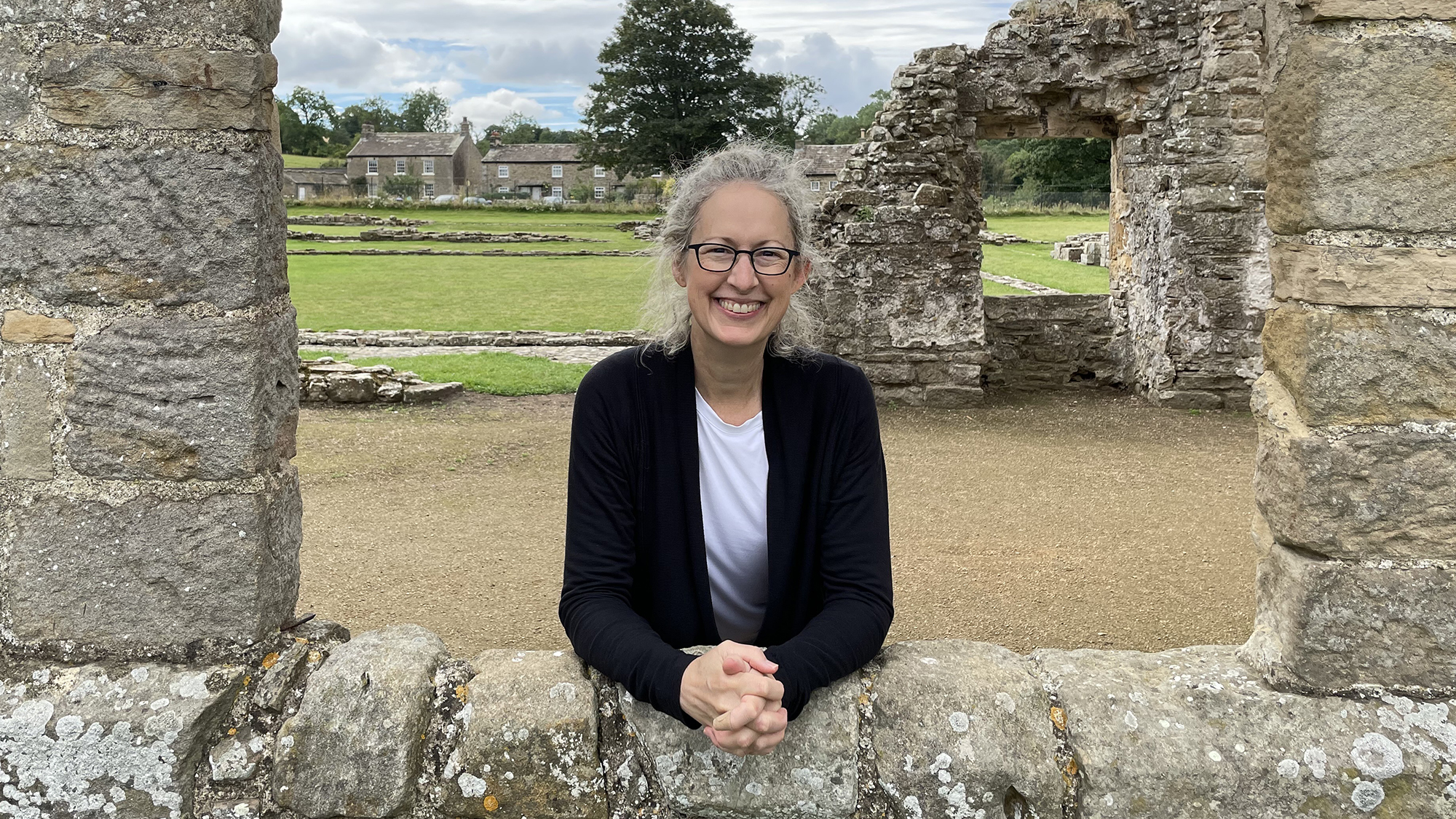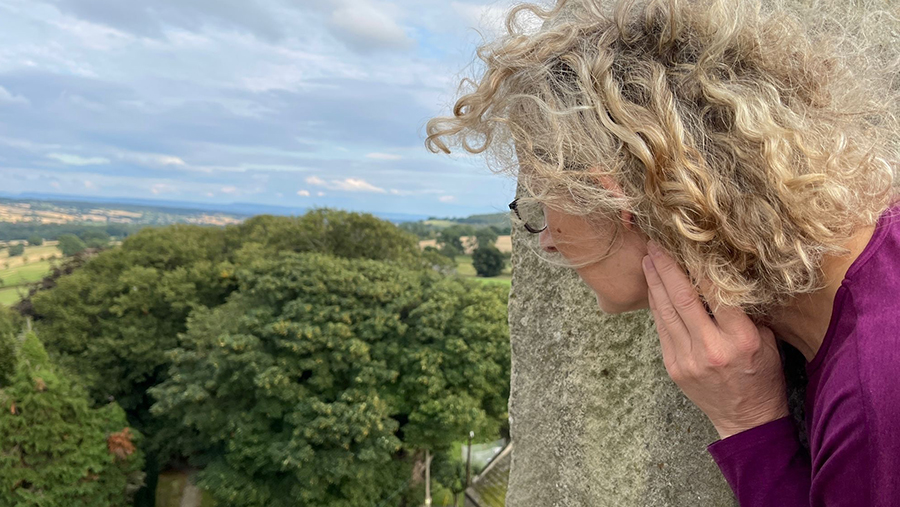My Sabbatical – 50% what I planned / 100% what I needed
Why I needed it, what I learned, how it shifted my thinking
By Gail Crider
NAS President & CEO Gail Crider took a four month work sabbatical this past summer. It was an illuminating experience for both her and the organization. Now back at the helm, Gail has reflected on preparing both herself and NAS for her time away, how she spent her sabbatical, and her return to the office.
If you are reading this, you might be feeling overwhelmed at work, wrestling with a loss of focus and energy – as if the more energy you put in, the less productive you feel – or you might simply be curious. Whatever the reason, thank you for joining me for this next bit of time. I promise vulnerability and a window into my journey that I hope will be of some use to you.
For me, this sabbatical was a long time coming. Let’s start at the beginning – for which we have to go way back, like ten years ago when I was a vice president at NAS. Our CEO at the time took a sabbatical (I think this was the first time in our organization’s history that this had happened) and invited both vice presidents to do the same once she returned. The thinking behind these was that each of us needed a perspective refresher after years of insane schedules, including travels that made it tough to find time to even do laundry, and having consciously or unconsciously built and reinforced unhealthy work habits. Fate and life intervened and neither VP took the sabbatical. A couple of years later, when I became CEO and negotiated my contract with the NAS board, we agreed to put this back in play after two years in my current role. Two years passed, and I put the sabbatical on hold again.
I am the longest-standing staff member – started at what was then NASF in 1996 – on what is now a team of nine. Nine very hard working people punching above their weight pretty regularly. I kept putting off the sabbatical given changes that were happening personally and professionally. It never felt like the right time, and I continued to wonder if I’d really earned the time off. Until it hit me that I needed a break, or I would break. And the organization that I love and feel a deep sense of commitment towards our mission needed a break from me.
We all needed different perspectives. I felt weighed down by my own routines and habits that I didn’t seem to have energy or time to question. Equally, I felt it could be good for the team and for my colleagues and vice presidents, Deryn Dudley and Sunny Widmann, to try on different kinds of roles and develop their leadership within that changed space (stay tuned for their blog on their experience co-leading).
Preparing for the Sabbatical
So how did this go from concept to reality? As was my history with this effort, I was enamored with all the reasons not to take extended time off. I was too needed, there was too much to do, it was not a good time – to name a few. All the while my own internal stress increased, and my stamina decreased. I was cranky and sat more in the space of judgement rather than curiosity. I had an ever-increasing thought that I should be able to control everything and keep everyone happy. I was losing perspective and patience and curiosity, and I had long since lost my sense of humor and fun.
Amid this chorus of negative voices in my head I meditated on my path, which brought three things to the forefront: I am part of a strong staff and board team; I need to listen to my body’s signals to change things up; and there could be many benefits for NAS from my time away. My colleagues also got a message through to me that I could and should take a break and soon. They could see, perhaps better than I at the time, that I needed time away and that the benefits would be felt across the organization. Pulling a senior team member out of the picture for a significant span of time creates space for the rest of the team to think differently, experiment, and change things up.
So I got myself a coach – one from the NAS Leadership Coaching collective, actually – and I created a vision board on Miro. Both my coach and the vision board helped me map the adventure ahead and take a hard look at my true why, along with the what and the when.
As a team, Deryn, Sunny, and I tried to anticipate the impact of my absence and figured out the best time to kick me out of the office for three months. That meant thinking structurally about what it would mean to pull me out – internally and externally, and how best to compensate those who would shoulder additional responsibilities. At this point, we involved everyone on staff in surfacing blind spots and identifying potential bottlenecks.
Next I began the personal work of letting go. I met with my great coach five times over the course of about three months. Her questions brought me face to face with my assumptions, bad habits, and in some instances, limited thinking. I continued working on my vision board, creating and cataloging things like where I hoped to be at the end of the sabbatical and obstacles to getting there, along with areas to think through what I would be doing for my mind, for my body, and for my relationships. I created a budget. I listed all the things I might want to do (there were A LOT). And I mapped a timeline.
The Sabbatical
As the time drew near, I was so consumed with everyday details and making sure I was leaving things in order that I was barely focusing on the actual first day of the sabbatical. Then it arrived and it felt odd and uncomfortable. For the first several days I did a lot of meditating, physical activities, and cleaning of closets to rest and occupy my mind as I let go of work routines and habits. I turned off Slack and other connection and social media tools that normally call to me like a siren, or a giant marshmallow that surrounds me once I’ve been pulled in. Over the next several weeks I moved my brain and body into new spaces – literally and figuratively.
Some highlights and lowlights:

- Starting to learn a new language
- Jumping around a lot (literally) with my great-niece
- Changing my diet, meditation, and exercise patterns to improve my health and well-being
- Being fully present with people
- Being on my own with no purpose or agenda for a while
- Sitting with my feeling self in relationship with, but not eclipsed by, my thinking self.
Lowlights:
- Gravitating more times than I care to admit back to my “list and accomplishments” persona focused on productivity and getting things done as quickly as possible. Though ironically, I couldn’t seem to finish a book on how to be idle gifted to me by a dear friend.
- Sitting with my identity without the CEO title. This was really tough at first but as I gave it more space, that space yielded a lot of learning.
- Backing a rental car into a metal gate (flip side was that there ended up being great lessons there about what happens when I don’t listen to my own self and don’t trust my experience in stressful situations).
I could go on, but I’d probably cross the line into therapy or TMI.
A month before I was set to return I got a surprising and wonderful call from Sunny and Deryn. They wondered if I wanted to take a little more time and said that it would give them a chance to coalesce their experience as co-leaders. I believe the first words out of my mouth were “heck yes.” I used this extra time to do more baking and reading and to further prepare for re-entry, which included the fun of cleaning and organizing my inbox.
Return to the Office
When I did return, it felt a little weird to rejoin the flow. Like trying to figure out how to swim in changed waters. Because my return occurred just before a major event, Deryn, Sunny, and I were delayed in truly catching up and digging in deeply to their experiences, the changes they wanted to see going forward, and comparing notes with my own experiences and views. I regret this delay, but recognize that nothing is perfect and time is malleable.
The NAS team had moved through the time as they always do – punching above their weight. Each of us recognized how important it is to step away from work for spans of time to gain and/or keep perspective. With increased awareness, we will be making more changes to our workflow and culture to support this for each other. Whether this comes in the form of sabbaticals or other things, we are not sure yet. More ideas we have on the table: workflow recalibration – looking at the upcoming year in terms of workloads, organization strategy, and creating reflective and regenerative downtime for the entire team at regular intervals; goals that include a failure space – because if we aren’t failing sometimes, perhaps we are not setting our sights high enough; and prototype weeks to surface and support new, wild, and untested ideas.
The road ahead holds many challenges to being in right relationship with the earth, for nurturing belonging and not divisiveness, and for changing oppressive and outdated ways of operating in our industry and in our communities. And, me? I came out on the other side feeling healthier and more equipped for the twists and turns and bumps that may be ahead, with habits examined, with my curiosity about people and situations refurbished, and with ideas to balance much more reflection and action time into the culture of NAS. I found a space of peacefulness inside myself, and I hope to maintain that equanimity because it feels right and because it is the best way for me to be able to support others who are leading change in so many important ways. Oh and I found fun Gail again.
Stay tuned for an upcoming companion piece by NAS Vice Presidents Deryn Dudley and Sunny Widmann, who will be sharing their experience co-leading NAS during Gail’s sabbatical!

